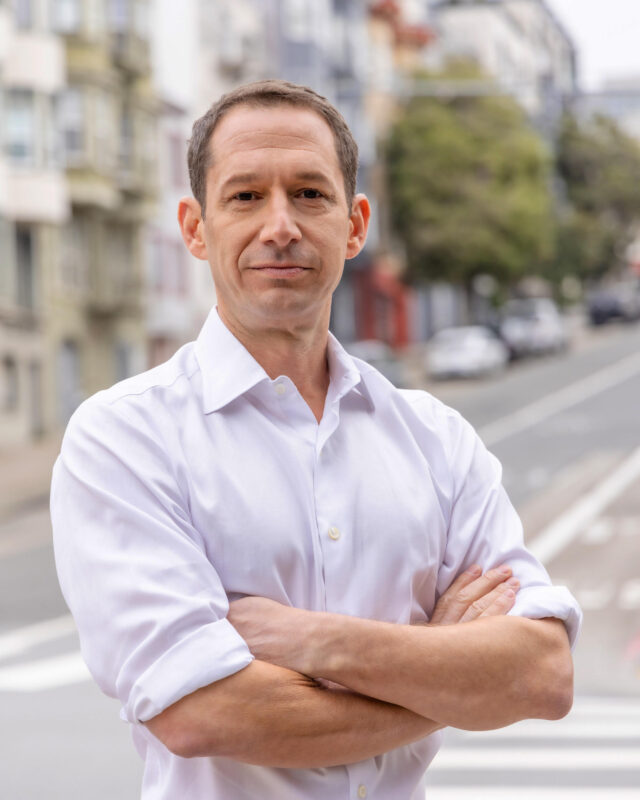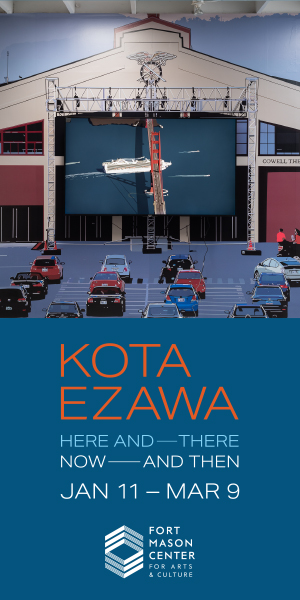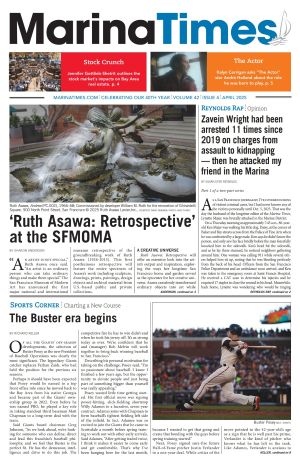“A Trump promise could be ‘catastrophic’ to California’s wine industry,” a Nov. 13 San Francisco Chronicle headline read. “Farm ranchers in my district already have trouble filling the jobs they have available,” said Rep. Mike Thompson, D-Napa. “We have a tremendous gap between the number of workers we have and the number of job openings. Something like this is just going to cause heartache.” Where the Chronicle and vintners see illegal immigrants being deported as leaving the Wine Country depleted of their cheap labor, I see an opportunity to train the homeless and make them productive citizens. It would teach them a skill, help them earn an honest wage, remove the temptation of drugs on every corner, and provide them with a place to stay that, while certainly not ideal, couldn’t be worse than a tent on a Tenderloin sidewalk.
That, of course, will never happen in San Francisco’s political climate. Far-left “progressives” and activists like Jennifer Friedenbach (Executive Director of the San Francisco Coalition on Homelessness) would cry “Inhumane!” “Don’t make them work!” “You’re violating their civil rights!” “They have a perfectly good life in those tents!” (Fun fact: Friedenbach comes from a farming family, too — she’s an almond heiress.)
For those who have been in San Francisco a long time, you may recall Friedenbach was angry about the displacement of homeless encampments before the 2016 Super Bowl. Ironically, that has ties to current mayor Daniel Lurie, who then spearheaded the successful effort for the Bay Area to host the 50th Super Bowl. Then-Mayor Ed Lee tapped him to chair the Super Bowl 50 Host Committee (despite the fact it was held in Santa Clara at Levi’s Stadium, named for the company Lurie’s mother, Mimi, married into). To officials eager to get some of those Big Game bucks, it all sounded super, but the Super Bowl festivities helped to create much of the visible homelessness we see in San Francisco today.
In less than a month, Lurie and Lee built a city for fans to party in and tore it down as if it never existed. Yet, driving down Division Street a few days after the hoopla, my friend Steve and I counted more than 130 homeless-occupied tents that hadn’t been there before. “It looks like a Hooverville. We should call this a ‘Leeville’ after Mayor Lee,” Steve said, referring to the shantytowns built by the down-and-out during the Great Depression and named for President Herbert Hoover. Because of the country’s unbearable social and economic conditions, Hoover became highly unpopular (sort of like London Breed) and was defeated in the 1932 election by Franklin D. Roosevelt (sort of like Daniel Lurie).
The only thing we have to fear is fentanyl
Historians generally consider 1933 to be the worst year of the Depression: One-quarter of American workers — more than 15 million people — were unemployed. On March 4 of that year, Roosevelt delivered his first inaugural address before 100,000 people on Washington’s Capitol Plaza. Known as one of history’s greatest orators, Roosevelt landed arguably his best line in that speech: “The only thing we have to fear is fear itself.” He promised to act swiftly to face the “dark realities of the moment” and assured his fellow Americans that he would “wage a war against the emergency” just as though “we were in fact invaded by a foreign foe.” He gave people hope and confidence in electing a man who was unafraid to take bold steps to solve big problems. Roosevelt’s recovery plan, referred to as the New Deal, eventually reduced unemployment, regulated banking, and assisted the turnaround of an ailing economy with public works projects. By the early 1940s, with the economy rebounding during World War II, Hoovervilles had fewer residents, and most were torn down.
On Jan. 14, 2025, Lurie introduced his first major ordinance as San Francisco’s new mayor: a “Fentanyl State of Emergency.” The comparisons to Roosevelt stop not just at great orator (which Lurie is not) but also at fentanyl. During the Great Depression, the majority of people living in Hoovervilles were desperate for work and would have queued up for miles at wineries for the backbreaking jobs. The homeless in San Francisco’s encampments are mostly drug tourists, hopping off buses in droves to collect one of the most generous general assistance payments in the country at over $600 per month, then spending it on drugs, which they do in tents handed out by groups like the Coalition on Homelessness.

Like most officials past and present, Lurie equates homelessness with a lack of housing. I, on the other hand, have written for over a decade that it’s the drugs. Lurie has promised to “stand up” 1,500 shelter beds all over the city during his first six months in office, but even if he could snap his fingers and create 20,000 shelter beds, nothing would change. Why? Because most of the people living on the streets want to stay on the streets where they can do drugs.
Perhaps the most preposterous of Lurie’s ideas is having his fellow multimillionaire friends throw more money at the nonprofit industrial complex, which has grown accustomed to sucking from the city’s generous teat. Look at harm reduction proponent HealthRIGHT 360, which ran the now defunct Linkage Center — in 2023, they had a total revenue of $147,317,593 with nearly 47% of it going to “Other Salaries and Wages.” They also spent $2,776,292 in executive compensation, with nine officers earning between $268,000 and $379,000 annually. In a critical 2020 performance audit of the Department of Homelessness and Supportive Housing by the budget and legislative analyst, the department’s coffers had $364 million — an 80% increase since its inception under the late Mayor Lee in 2016. And the results? Between 2017 and 2019, the number of people without permanent housing grew by 30%. As of that March 2020 audit (the last one performed), DHSH had contracts with 59 providers for 350 programs with total funding in the 2019–20 fiscal year of $240.6 million.
Then there’s the Our City, Our Home Oversight Committee, set up to ensure the funds from Proposition C — passed by voters in 2018 to raise millions for the homeless by increasing taxes on large businesses — are “effectively and transparently used.” Proposition C’s biggest lobbyist, Friedenbach, was appointed to the committee by the Board of Supervisors (so much for transparency). According to their website, during the 2022–23 fiscal year they expended $94 million on acquisition of new buildings for use as permanent supportive housing and $57 million in “housing operations.” Overall, they funded 2,909 units of housing capacity including “783 net units of capacity added in FY22–23.” Math isn’t my strong suit (hence the writing gig), but that comes out to $151 million spent on a total of 2,909 units. Clearly, money isn’t the issue, and it seems Lurie would know that because his own nonprofit, Tipping Point Community, has donated millions to many of the same nonprofits — including Coalition on Homelessness and HealthRIGHT 360 — which have helped to make San Francisco more famous for the fentanyl fold than for the Golden Gate Bridge.
If Lurie really wants his Roosevelt moment, he’s going to have to make San Francisco inhospitable by not tolerating abhorrent and illegal behavior. In Silicon Valley, you don’t see people selling or using drugs in front of residences or businesses. Why? Because the police arrest them. That’s what needs to happen in San Francisco. If you’re caught selling drugs, you go to jail. If you’re selling drugs and are in the United States illegally, you get deported. If you’re caught doing drugs in public, you go to jail. If you can’t prove you lost your housing in San Francisco, no more general assistance. If you came here as a drug tourist, you get a bus ticket home. I don’t believe Lurie has it in him, and even if he did, the activists and progressives — including those on the Board of Supervisors — would cry “Inhumane!” “This is a sanctuary city!” “You’re violating their civil rights!” “They have a perfectly good life in those tents!”
Follow Susan and the Marina Times on X: @SusanDReynolds and @TheMarinaTimes.




